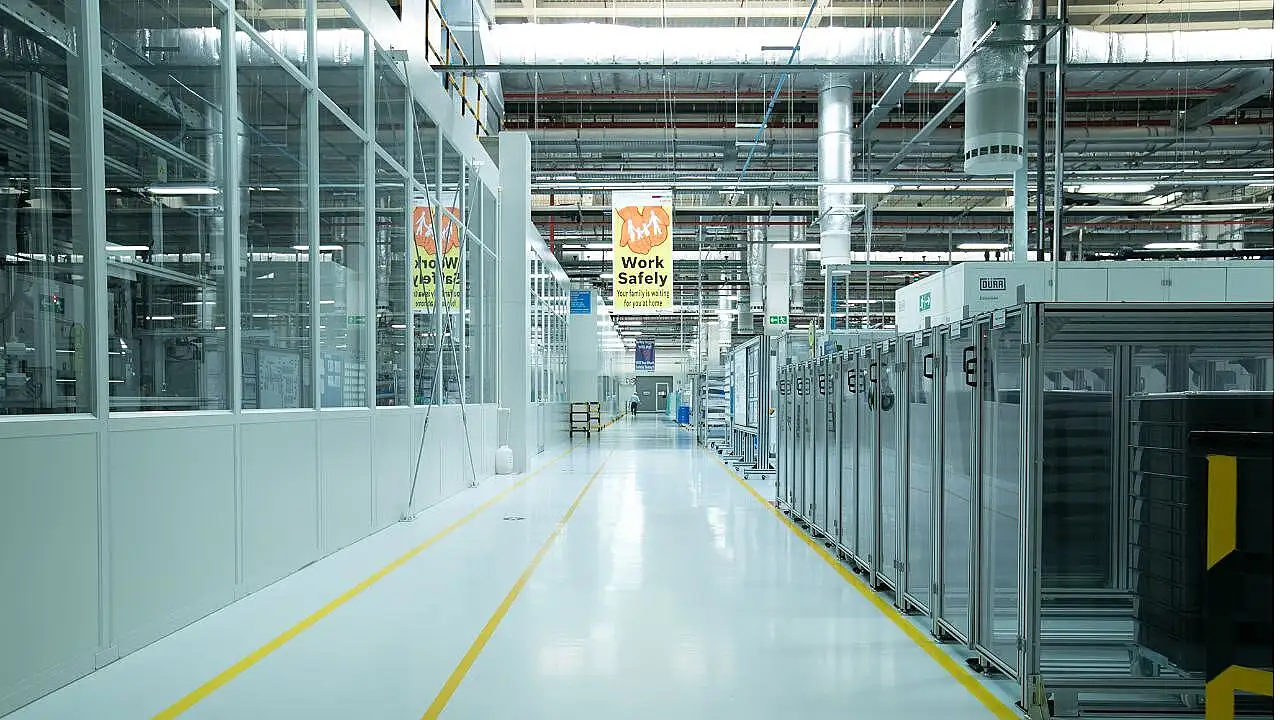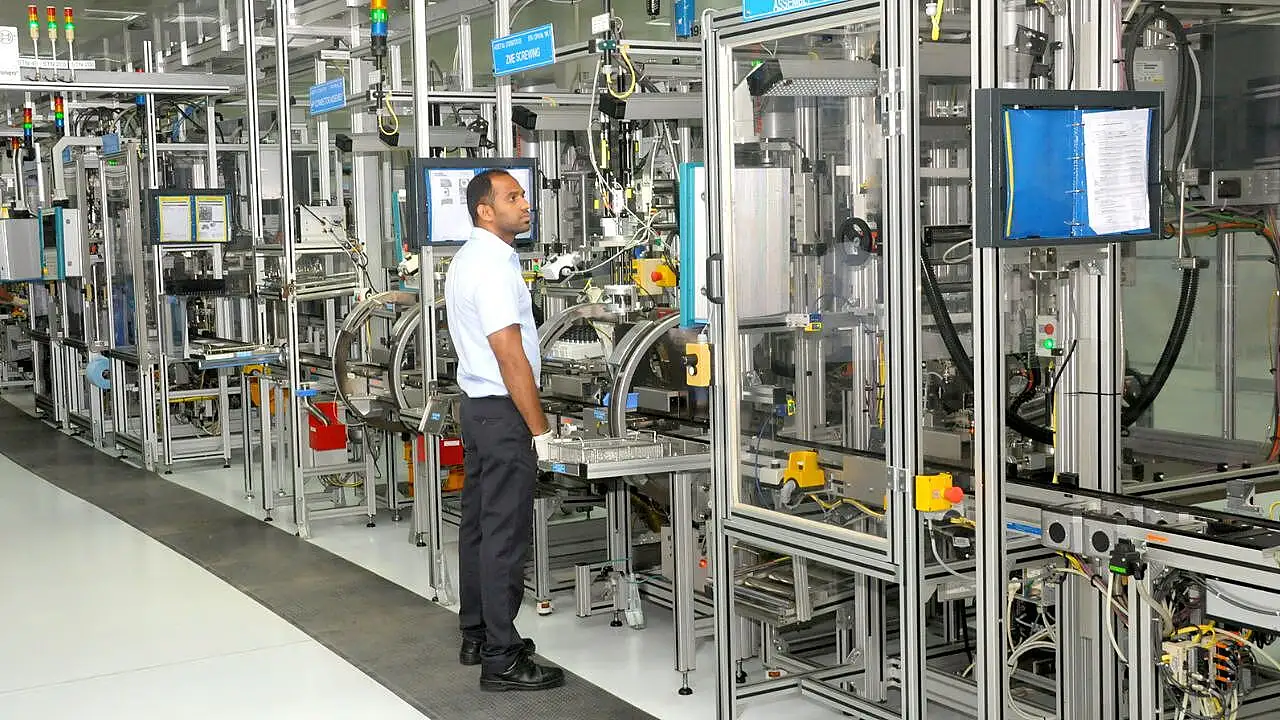
Associated with the Bosch Group since 1991, Karsten Mueller is currently Executive VP, Head of Manufacturing Strategy and Quality, Head of Manufacturing Operations – Powertrain Solutions India. Beginning his career as a junior management programme member at Bosch’s Hildesheim plant in Germany, he has worked in several management positions, mainly in manufacturing, quality, safety, project management and corporate functions.
How is automation changing India’s manufacturing landscape?
We have to look into the different stages of the industrial revolution, from mass production to automation and digitisation. I think this is an evolution we have seen everywhere. Each of these is a turning point and also depends on the development of the economy.
Now, we are going for much automation already because we see that, as a society, we have evolved and that many business cases now are positive on automation. This is also on low-cost automation; we are looking deeply into this to increase efficiency and quality because higher quality levels also come with safe automation. We are in the middle of automation; of course, we have a lot of standardised processes globally, which are also in India. But the way we operate the machines can be manual or automated. So we shall see considerable automation in India in the next decade or so.
What about digitisation?
Digitisation comes only with automation. Only advanced technologies have connectivity capabilities, which will change many things. First, it is organisational efficiency to capture data that will manage and steer manufacturing. Second, learning more about the processes and insights into machines leads to improved maintenance, strategies, and approaches. It isn’t possible to reach a world-class level without digitisation, where equipment efficiencies will be at 95% of OE levels.
Are there pain points in implementing these technologies?
Pain points are more in the way to implement it quickly, sustainably and on a broad base. Of course, taking care of cyber security is necessary because the more we connect, the more the risk is. If somebody hacks, the entire manufacturing will be down. So that's why we are focussing a lot on the zoning of data, zoning and mirroring of servers to be always ready to produce because our customers will not accept.
The biggest challenge is connecting the legacy machines, which is only sometimes economically viable. So, we decided to use a case-by-case approach. In India, the connectivity level of 70% is reasonable on the currently installed machines. It does not make sense to push beyond this level with 40 to 50-year-old mechanical machines, even if upgrading them with sensors and intelligence.

Yet another challenge is how to make the organisation data-driven. Strategically, we also need to find approaches to increase digital fluency; we did this by bringing 100% of our associates into a digital fluency programme so that the people understand that there's no option not to go digital.
The next wave is bringing expert programmes for data engineers, scientists and engineers from a technical standpoint. Also, bringing the mind-set of data as an improvement instrument into the organisation is a change process, which takes much longer than the technology itself.
Can you talk about testing and validating digital manufacturing solutions?
We release the machines with the software itself, validating the product in the process. Whenever we change something in the software, we have to change the processes to ensure that the quality of the part is maintained. It’s here that software and hardware come together. So, we closely monitor both changes with clearly defined release processes and our quality management system.
Is Bosch looking at additive manufacturing?
We have competence globally for 3D printing in metal and plastics. More interesting and relevant is that metal 3D printing is in two parts – one is improving the tooling. For example, if you can print the base moulds, you can cool the mould and the cavities much better. With 3D printing, we can go much more precise with the grinding process and improve quality.
Secondly, we are looking into parts as well. Our old mechanical systems in diesel space have over 1,300 different part numbers. Today we make one million a year. Due to the legislation, we have to change the common rail. We keep the variance but go down to only 100,000 or 50,000 a year. The 3D printing might be a solution for a high volume of typecasting parts. We are attempting to print very small volumes at equal price points, specifically for aluminium, even in series production.
To what extent has Bosch witnessed productivity improvements with new manufacturing technologies?
It's about the flexibility built into the processes. We establish simultaneous engineering processes where we look at the fine elements in the product design itself. Changeover time is key. With past changeovers based on well-understood design elements, we can increase variance without losing performance. Of course, thinking through the pool of value chains is necessary. It is tricky when it comes to high-volume castings. Our approach is to bring engineering, purchasing, and manufacturing together.
Do you use technologies like AR, VR, and 5G-enabled VR, while commissioning the machines at different locations in the country?
We use it for training on safety and quality so that people can experience something in the virtual rooms. We try something in designing workplaces and try it in a virtual world.
For 5G, we have trial runs in one of our plants. In the next couple of years, we will see 5G, especially for autonomous transportation, which will come with an intra-logistics steering system based on 5G, and enhanced speed, among other advantages.
What is the next step in the new manufacturing systems?
Next is, of course, to roll out the platforms. We still have to do some homework on the platform so that all the entities are on the same platform, speaking the same analytics language. What we have laid out as a strategy is going for 100% connectivity, going more wireless, centralised logic and computing power in the cloud instead of having everything on-site, which comes with high cost, including infrastructure.
I am also talking about fluid or flexible manufacturing. So far, we have lean manufacturing and assembly lines connected with belts. We can also think about new ways of transportation, like magnetic conveyor systems on which we can flexibly change between the operations. Today it is in sequence, say operation one, two, three and four in order, but if we can change these operations with standardised cells, we can save a lot of investments and master the complexities. Therefore, there can always be flexibility in changing manufacturing orders. It can be some magnetic work-piece carrier or AGV – Automated Guided Vehicle – connecting manufacturing cells.
One other topic today is fixed PLC programming. As we go ten to 15 years down the line, it will be cyber-physical systems, where we only share recipes and the abilities of machines. There is no predetermined coding. This also opens a lot of flexibility and reduces investments. We have to think beyond, and this is what we do.

Are you looking for magnetic levitation?
There's a technology developed by Bosch called Leviathan, a kind of magnetic conveyor system with five axes and moving with many electrical motors. Today it's too expensive, but we are experimenting with this to create the manufacturing lines for the future; of course, in India, we are observing. The tipping point from a cost perspective is beyond, but it will come, and we have to think about these systems.
Since you mentioned this is very expensive, what would be the advantage of using it?
In the conventional method, duplicating the manufacturing line for operations in the different sequences is necessary, as it depends on the conveyor. However, with just a 10% increase in investments, the flexible manufacturing line will help achieve volumes. We need to go for wireless connectivity on the power supply itself, and we are also developing this kind of intelligent floor space. There are some examples already in ARENA2036 in Stuttgart where we go into the manufacturing of the future. Of course, my teams here are also looking at when this might be an option for us.
When will you reach 100% connectivity?
It will be 100% for the new investments as it comes with full connectivity for a platform, and in the background, we have Bosch-developed MAS – Manufacturing Analytics System – based on AI. On the legacy machines, it will be up to 70% because the remaining 30% is too expensive to equip the old equipment.
Also Read:
Bosch Sensor Technology Gets A Leg Up At CES 2023
Bosch India Concludes 100-yr Celebration, Embodies Future Readiness